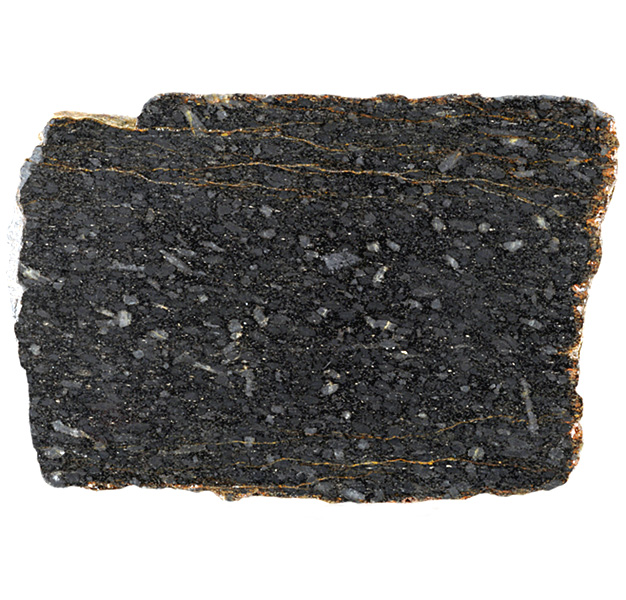
Fact sheet
This sample of andalusite-cordierite hornfels comes from the aureole of the Skiddaw granite in Cumbria, and is part of the Skiddaw Group, a series of deformed pelitic rocks that were thermally metamorphosed by the Skiddaw granite around 400 million years ago. The Skiddaw Group were originally a thick sequence of Ordovician mudstones and siltstones. Recrystallisation of the original aluminous sediments occurred during the contact metamorphism associated with granite intrusion forming the andalusite crystals that are visible in hand specimen.
In thin section the square and elongate andalusite crystals are white in ppl and low first order colours between crossed polars. These andalusite crystals exhibit unusual crystal shapes with darker inclusion rich zones forming star shapes at the corners of the square cross sections. This variety of andalusite with carbonaceous material preferentially concentrated along crystallographic planes is known as chiastolite. Accompanying the andalusite is another metamorphic mineral, cordierite which forms indistinct, rounded crystals containing many inclusions of biotite and quartz, giving it a mottled appearance. The thin section also contains fine grained quartz, feldspar and biotite.
The United Kingdom Virtual Microscope (UKVM) collection consists of igneous, sedimentary and metamorphic rocks from around the UK.
It is intended as a teaching resource, helping to tell the story of the common rock types and how they form, and reflecting the history of the UK at the margins of the continent of Europe. The collection is a series of teaching sets, for example igneous rocks from the North Atlantic Igneous Province and SW England; high-temperature metamorphic rocks from Scotland and low-temperature metamorphic rocks from Wales; and sedimentary rocks, including English limestones and sandstones.






